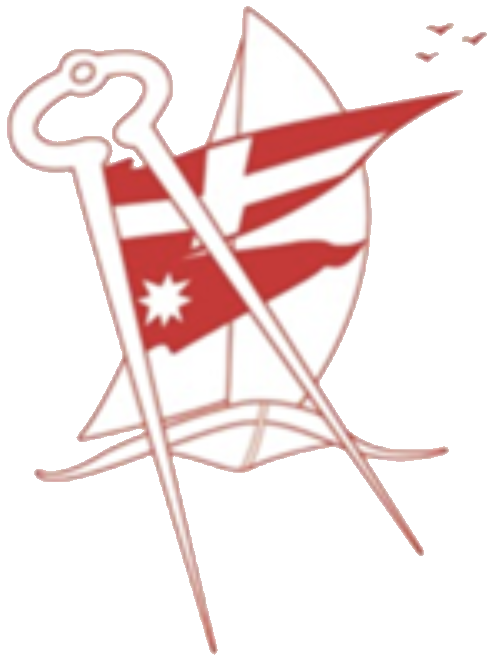Owners: Niclas & Susanna Westling.
She was built in 2010, probably in Florida, USA, and is designed by Gerry Douglas. The C375 was replacing the much more common C36 (Mk2). The diesel power comes from a 40HP 3 cylinder Yanmar (3JH4E). The hull is made of hand-laid woven fiberglass and Vinylester (no sandwich) and the deck and cabin top is a balsa core sandwich construction. The mast is deck-stepped.

When #41 arrived in Australia the final fit-out was made next to MHYC where the local Catalina dealership used to be.
Her first years in Australia was spent in charter up in Airlie beach, QLD, with the name “Rocket” with her first owner being Simon Rock.
We bought her in September 2019, from the second owner who had kept her in Pittwater.
In general, the Catalina’s seem to be very sturdy builds and the rigging is quite over-dimensioned which gives us some peace of mind if we want to go for longer off-shore adventures. Most people seem to have good things to say about Catalina boats, which obviously feels good as well.
Space and Storage
One of the first things you notice when you walk down the companionway is that this boat is very wide and opens to a very spacious saloon.

The C375 is a two cabin configuration with an aft cabin with a queen size bed mounted sideways, as well as a more traditional queen size v-berth fore cabin. It has a single electric head which is quite spacious and has a dedicated shower corner.
There is plenty of storage throughout downstairs and a deep cockpit locker where we keep BBQ, spare sails, ropes etc.
A selling point for us (=Niclas, 191cm) was the good ceiling height in the cabin which meant I can stand upright within most parts of the boat.
Sailing it
The mast and boom are from Selden (Swedish!) and it has an in-mast furling mainsail, and a furling headsail.
Our boat is not currently equipped with any form of spinnaker, but we have fitted a whisker pole to be able to pole out the headsail for longer downwind legs.
She has a spade rudder and the boat is normally very well balanced, to the point we can let go of the rudder for periods without it altering course.
The original 140% size headsail can be a little unwieldy to tack with, getting stuck on the shrouds and heavy to sheet in, and since we normally have a fairly fresh breeze on the Australian east coast during summer we have opted for a new headsail which is smaller, around 120%, and hence easier to handle. It also keeps it shape better when slightly furled than the bigger headsail.
The boat has a fixed three-blade propeller and it does slow us down a bit while sailing, so a potential future upgrade would be a foldable one.
Cruising aspects we like
This boat is no racer, and we frankly struggle a bit to keep up with similar size boats while sailing, as it’s clearly designed more with cruising in mind, which actually works well for us as we’re not racing her.
Some of the things we like and makes cruising easy are:
- The shallow draft of 1.4m, thanks to the wing keel (which was a factory option). It has allowed us to explore Lake Macquarie, Brisbane waters, and the inner parts of Port Hacking without any grounding incidents.
- The built-in swim platform in the transom. Initially, we were dead set on getting a boat with a fold-out swim platform, but having the fixed swim platform feels a lot safer if/when we need to get a man overboard back onboard. Also much easier to get on and off the boat when we’re in the marina. We also feel it’s superior to have some form of mechanical arrangement to fold one down, which can break.
- Having all the necessary halyards and sheets back in the cockpit means we don’t normally need to leave the cockpit to hoist sails or reef/furl them back in. A nice safety aspect especially when out on the ocean
- A combination of dodger, Bimini, and an additional infill cover means we can get fully covered for days with too much rain (or sunshine).

Recent Comments